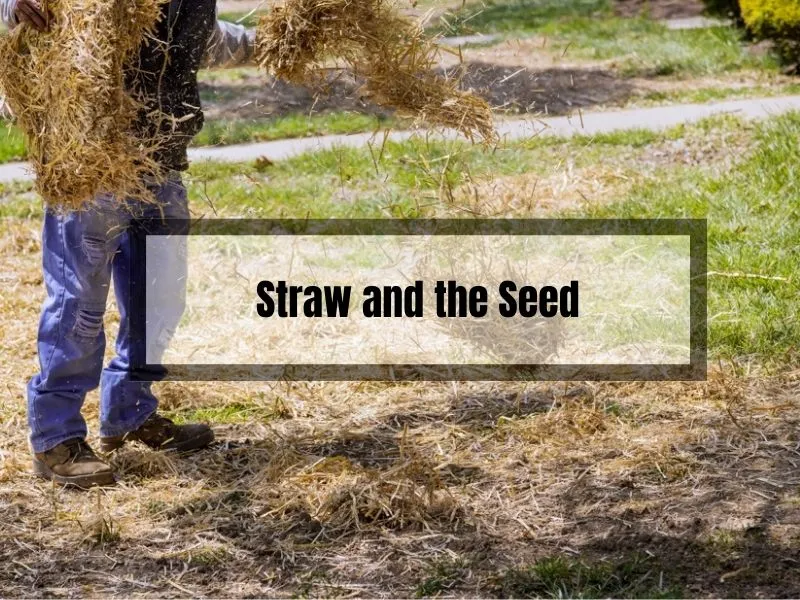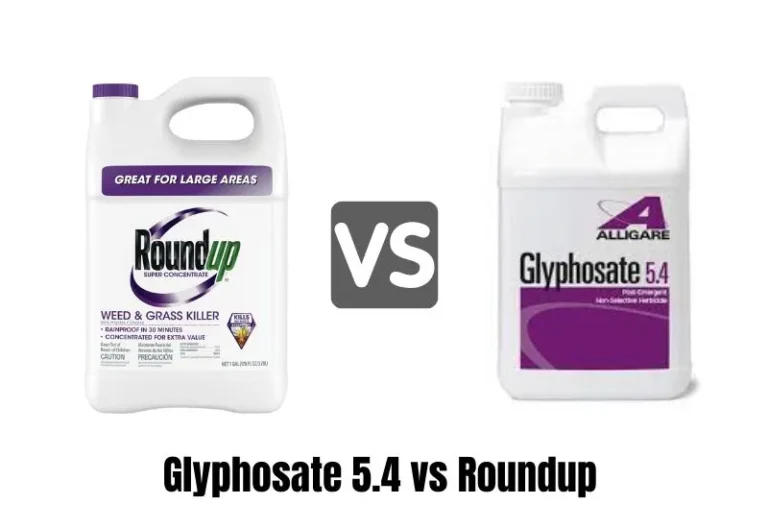The Straw and the Seed: When Too Much is Not a Good Thing
Establishing a new lawn is no walk in the park, especially if you’re using straw on grass seed. But fear not, dear reader, for I’ve got the lowdown on whether there’s a better option out there.
Hey there, gardeners! It’s time to talk about lawn establishment, and specifically, the use of straw on grass seed. As a seasoned lawn enthusiast, I’ve seen the good, the bad, and the ugly when it comes to using straw for grass seed germination.
Today, we’re going to dive deep into the issue of too much straw on grass seed, and how it can negatively impact your lawn. Let’s get started!

Is Too Much Straw on Grass Seed a Problem?
First off The Answer is Yes, let’s talk about the not-so-great side of using straw on grass seed. While it may seem like a good idea, there are a few reasons to be cautious:
- Weed seeds: Straw can bring unwanted visitors to your lawn, like weeds.
- Germination inhibition: Piling on the straw can actually prevent grass seed from sprouting. Talk about irony!
- Unsightly appearance: No one wants a messy-looking lawn. Straw can blow around and create an eyesore until you mow for the first time.
- Risk of damage: When it’s time to remove the straw, you might accidentally harm those delicate young grass blades and roots.
Factors Contributing to Excessive Straw Application
So, why do some gardeners end up using too much straw on their grass seed? There are a few factors that can contribute to this issue:
- Lack of understanding of proper straw application techniques
- Fear of birds and pests damaging the newly seeded area
- Overestimating the amount of straw needed to protect the seed
- Following outdated or incorrect lawn establishment advice
Identifying the Signs of Over-Strawing
So, how can you tell if you’ve used too much straw on your grass seed? Here are a few visual cues and soil conditions to look out for:
Visual Cues of Excessive Straw Application
- A thick, white layer of straw covering the seeded area
- A mat-like appearance to the straw
- Difficulty seeing any soil or seed through the straw
Soil Conditions and Seedling Growth Patterns
- Moist soil that smells sour or rotten
- Little to no grass growth after several weeks
- Seedlings that appear yellow or stunted
Impact of Too Much Straw on Grass Seed
Now that we understand how straw can affect grass seed germination, let’s talk about the negative effects of using too much straw on grass seed.
Reduced Seed Germination and Establishment
As we mentioned earlier, thick layers of straw can prevent sunlight and air from reaching the soil and seed.
This lack of exposure can delay or prevent germination altogether, leading to sparse or patchy grass growth.
Increased Risk of Lawn Diseases and Pests
Another issue with too much straw on grass seed is the increased risk of lawn diseases and pests.
Moist environments created by excessive straw can encourage fungal growth and insect infestations, which can further damage the young seedlings.
Negative Effects on Soil Quality and Environment
Overuse of straw can also negatively impact soil quality and the environment. Decomposing straw can deplete soil nutrients and alter the pH level, making it difficult for grass to grow.
Additionally, excessive straw can contribute to the buildup of thatch, which can prevent water and nutrients from reaching the soil.
For batter understand, watch this video:
Remedying the Issue
If you’ve identified that you’ve used too much straw on your grass seed, don’t worry! There are a few steps you can take to remedy the issue.
How to Remove Excess Straw from Newly Seeded Lawns
The first step is to remove any excess straw from the seeded area. This can be done by gently raking or blowing away the excess straw, taking care not to damage any emerging seedlings.
Be sure to remove enough straw to allow sunlight and air to reach the soil and seed.
Ensuring Proper Lawn Establishment Moving Forward
Once you’ve removed the excess straw, it’s important to ensure proper lawn establishment moving forward. This includes:
- Following proper lawn establishment techniques, including proper seed depth and spacing, watering, and fertilization
- Monitoring the seeded area for signs of pests or disease
- Avoiding excessive foot traffic on the newly seeded area
- Avoiding overuse of lawn care products, such as fertilizers and herbicides
Common Mistakes When Using Straw on Grass Seed
Confusing Straw and Hay
It’s easy to get mixed up between straw and hay, but there’s a crucial difference: hay comes with seed heads that can germinate alongside your grass seed. In other words, mistaken identity can lead to a whole new set of problems.
Applying Straw Too Thickly
Believe it or not, there is such a thing as too much straw. If you cover the ground too thickly, you risk inhibiting grass seed germination and causing other issues. So, be sure to apply just enough to keep the moisture in without smothering your seeds.
Tips for Proper Straw Application
Now that we’ve discussed the negative effects of over-strawing and how to remedy the issue, let’s talk about prevention. Here are a few tips for proper straw application during lawn establishment:
Use Straw Sparingly
Only use enough straw to cover the seeded area. A thin layer of straw can provide the necessary protection without hindering germination.
Avoid Matting the Straw
Spread the straw out evenly over the seeded area, taking care not to create a thick, mat-like layer.
Consider Alternatives to Straw
If you’re concerned about pests or wind damage, consider using a garden fabric or netting to protect the seed.
Stay Informed and Up-to-Date
Finally, it’s important to stay informed and up-to-date on proper lawn establishment techniques. Talk to your local garden center or university extension office for the latest advice and recommendations.
GreenView Fairway Formula Seeding Success: A Better Alternative to Straw
Now, I know what you’re thinking: “If straw isn’t the best option, what should I use instead?” Fear not, for I’ve got a solution that’ll make your lawn the envy of the neighborhood: GreenView Fairway Formula Seeding Success. This amazing product offers a ton of benefits, like:
- Better moisture retention
- Protection from sun and birds
- Soil erosion prevention
Plus, it’s just way easier to use. And who doesn’t love convenience?
How to Use GreenView Fairway Formula Seeding Success
So, let’s talk about how to get started with this fantastic alternative. It’s as simple as 1-2-3:
- Apply the pellets: Cover about one-quarter of the seeded ground with the product.
- Keep an eye on the color: The pellets will darken when wet and lighten when dry, giving you a clear sign of when it’s time to water.
- Enjoy your lush lawn: With GreenView Fairway Formula Seeding Success, you’ll be on your way to a healthier, more beautiful lawn in no time.
FAQs
I know you’ve got questions, so let’s dive into some common queries about straw and grass seed:
Is straw necessary for grass seed germination?
Nope! While it can help retain moisture, it’s not the only option. Alternatives like GreenView Fairway Formula Seeding Success can do the job even better.
How do I choose between straw and other mulching options?
Consider factors like convenience, effectiveness, and potential downsides (like weed seeds). GreenView Fairway Formula Seeding Success is a fantastic alternative that outshines traditional straw in many ways.
How do I care for a newly seeded lawn?
Patience is key! Water regularly, avoid walking on the young grass, and give it time to establish itself. With the right care, your lawn will be looking fabulous in no time.
Conclusion
n conclusion, using too much straw on grass seed can have negative effects on germination, establishment, soil quality, and the environment.
However, by understanding the problem, identifying the signs of over-strawing, and taking steps to remedy the issue, you can ensure a healthy and thriving lawn.
Remember, prevention is key, and with proper straw application techniques and lawn establishment practices, you can set yourself up for lawn success.
Related Posts:
- Understanding the differences between Peat Moss and Topsoil for Grass Seed
- Optimizing Rhubarb Health: Can You Feed Rhubarb with Tomorite
- Choosing the Right Medium: Peat Moss or Compost for Grass Seed
- Crucial Steps after Sowing: Do You Need to Roll New Grass Seed
- Deciding the Best Technique: Grass Removal or Rotavating for Your Lawn





